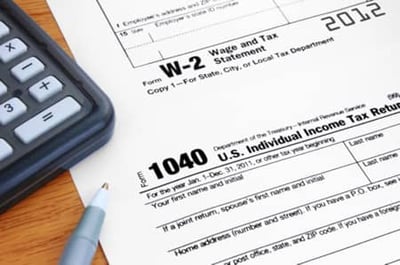Understanding Form W-2: Wage and Tax Statement for Employers
 Tax season is upon us, and for employers, that means navigating the sometimes-daunting task of completing Form W-2s for each employee. Whether you're a seasoned pro or a new business owner facing your first filing, this guide will help demystify the process and ensure you file accurate and timely information. We'll break down each box on the W-2 form, explain the intricacies of reporting different types of compensation, and answer your burning questions about filing deadlines.
Tax season is upon us, and for employers, that means navigating the sometimes-daunting task of completing Form W-2s for each employee. Whether you're a seasoned pro or a new business owner facing your first filing, this guide will help demystify the process and ensure you file accurate and timely information. We'll break down each box on the W-2 form, explain the intricacies of reporting different types of compensation, and answer your burning questions about filing deadlines.
Every employer is required to report wages paid as well as the related withholdings on Form W-2 each year. If filing 250 or more Forms W-2, employers must file Copy A in electronic format with the Social Security Administration. It is important to note that the IRS can grant employers a waiver of the electronic filing requirement upon receipt and approval of a written request. Form W-2 is a six part form that is to be distributed as follows.
Copy A
This section of the Form W-2, along with Form W-3, is typically due to the Social Security Administration by the end of January, but please consult with your local tax authorities.. If filing electronically, the due date may be extended. These forms should also be left unstapled and unattached from one another. Automatic extensions for 30 days to file Form W-2 can be requested with the Social Security Administration by sending Form 8809. Regardless, Form W-2 will need to be delivered to your employees by January 31st.
Copy 1
Ohio Form IT-3 is typically due by the end of January, but please consult with your local tax authorities. By filing Copy 1, employers are no longer required to send the state paper copies of Ohio Form IT-2 or federal Form W-2 or Form 1099-R. These records however must be maintained for a period of four years from the due date. Employers can elect to send the state W-2 and 1099-R information on magnetic media. If you do not do so, The Ohio Department of Taxation may periodically request W-2s when conducting compliance programs.
Your local tax district may also require a copy with a similar transmittal form and due date, so be sure to ask your Meaden & Moore tax professional in order to help ensure you are filing correctly.
Copy B, Copy C, & Copy 2
All three of these sections are due to the employee by January 31st.
Copy D
Copy D should be retained by employers in order to maintain records appropriately.
Special Boxes
In addition to the six parts above, there are some special boxes on Form W-2 that employers should pay attention to.
Box 11 Nonqualified Plan
This section reports any distributions from the nonqualified plan reported in Box 1.
Box 12 Codes
These codes refer to elective deferrals and other codes A-EE that are to be inputted on lines 12a-12d of Form W-2. Code DD is used to report the cost of employer-sponsored health coverage and the associated amount is not taxable. If you are an employer filing less than 250 Forms W-2 for the previous calendar year will not be required to report the cost of employer-sponsored health care on forms.
Generally speaking, the amount reported should include both the portion paid by the employer and the portion paid by the employee.
Box 13 Checkboxes
The retirement plan box should be checked if the employee was an active participant for any part of the calendar year, while the third-party sick pay box should be checked if you are the third-party sick pay payer or the employer reporting sick pay payments was made by a third party.
Box 14
The lease value of a vehicle must be reported in this section of the W-2. If other employee information reporting, such as health insurance premiums deducted, occurs, Box 14 can be used. Make sure to label any reporting that occurs within this section appropriately.
Empower Your Business and Employees with Accuracy and Compliance
Remember, accurate and timely filing not only ensures smooth sailing with the IRS but also empowers your employees to file their own taxes correctly. By following these guidelines, you've equipped yourself for future tax seasons, making them less of a hurdle and more of a routine stride. If any questions linger, don't hesitate to revisit this guide or reach out to a Meaden & Moore tax expert for assistance.
Interested in learning more about filing your taxes? Click on the button to download our comprehensive Tax Advisory. The guide is filled with helpful tips, tax breakdowns, charts, and examples in order to help make filing your taxes a little easier.
Jonathan Ciccotelli is the Partner-In-Charge of Meaden & Moore’s Tax Services Group. For over 29 years, Jonathan has worked closely with private and public companies in manufacturing, transportation, distribution, construction, and retail under a variety of business structures, including S-corporations, C-corporations, consolidated groups, and limited liability companies. He enjoys running, cycling, and cheering on his kids at sporting events.










